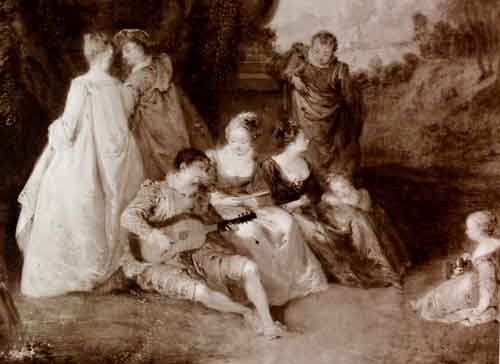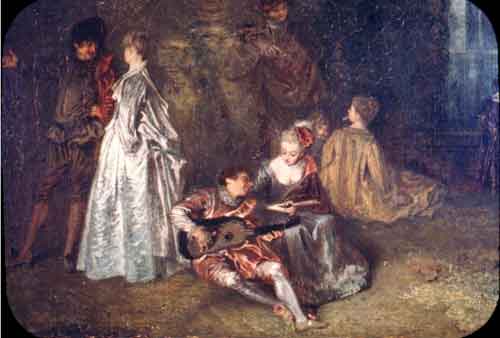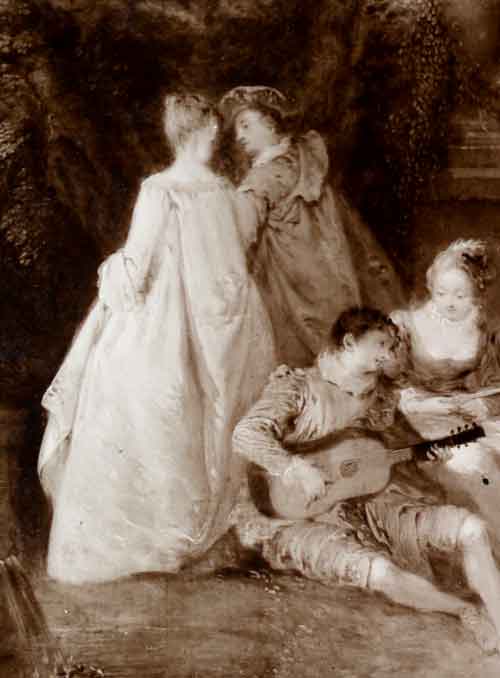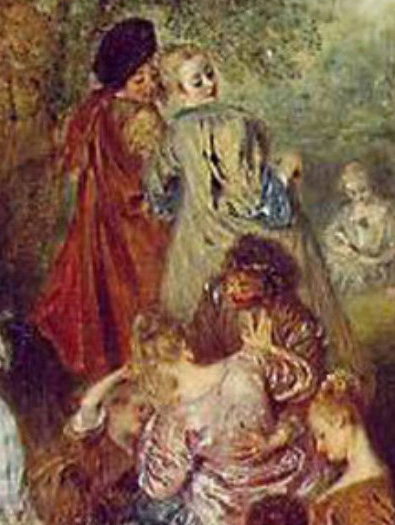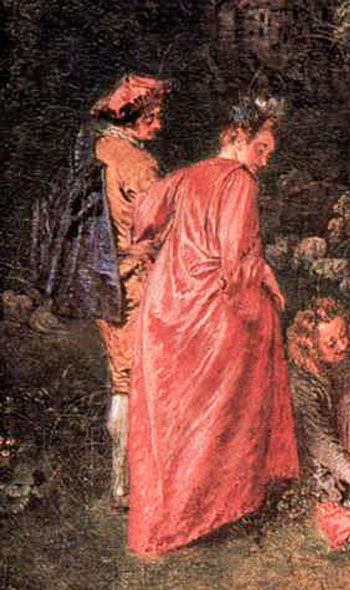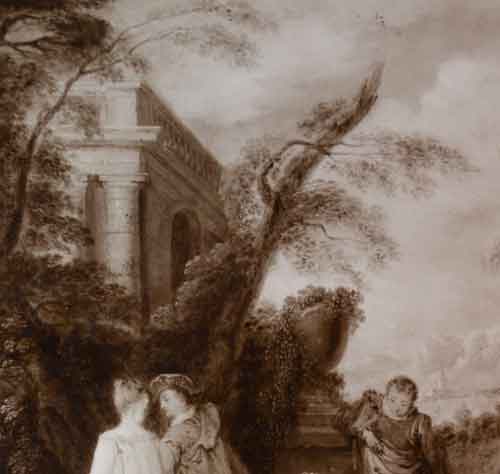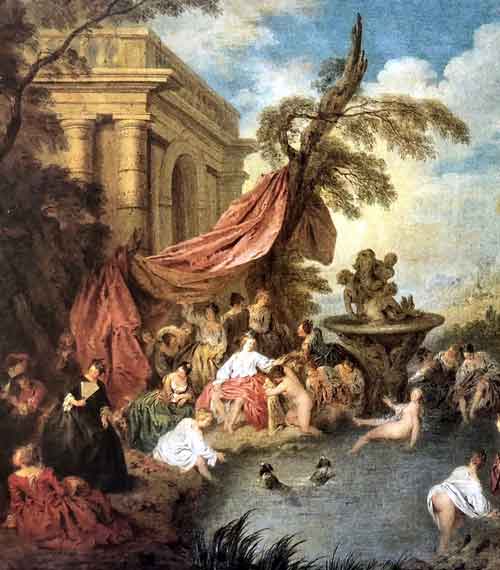
- Home Page
- Accepted
Paintings & Copies - Doubtful
Attributions - Doubtful Textual References
- Alternative
Titles - Collectors &
Museums - Bibliography
- Search Abecedario
- Watteau &
His Circle
X. Fête galante
Entered July 2018
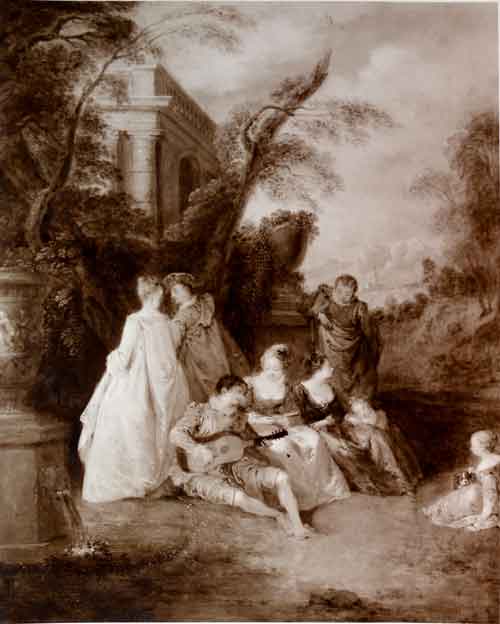
Whereabouts unknown
Medium unknown
Measurements unknown
REMARKS
This painting is known to me through photographs in archives such as the Witt Library, London, and the Getty Library, Los Angeles. According to annotations on the versos of the photographs, the painting was questioningly attributed to Pater. It is best understood as a pastiche, primarily after Watteau.
The guitarist and the woman he serenades, as well as the man leading on a high pedestal, were taken from Watteau’s La Perspective. However, whereas Watteau’s poses are gently nuanced, this anonymous painter has simplified them. Watteau's guitarist, for example, inclines his torso whereas the copyist's version is a simplier, vertical posture.
The couple at the left is strikingly graceful as they move away, and while they bring to mind several such couples in Watteau’s paintings, they do not seem to imitate any specific group. They recall the strolling figures at the center of Les Plaisirs d’amour, as well as those in the foreground of L’Amour paisible. Whatever his specific source, the pasticheur falls short of Watteau's inventions.
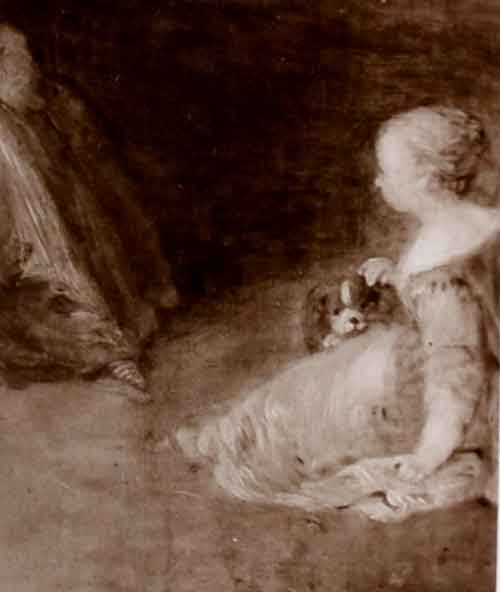
Fête galante (detail).
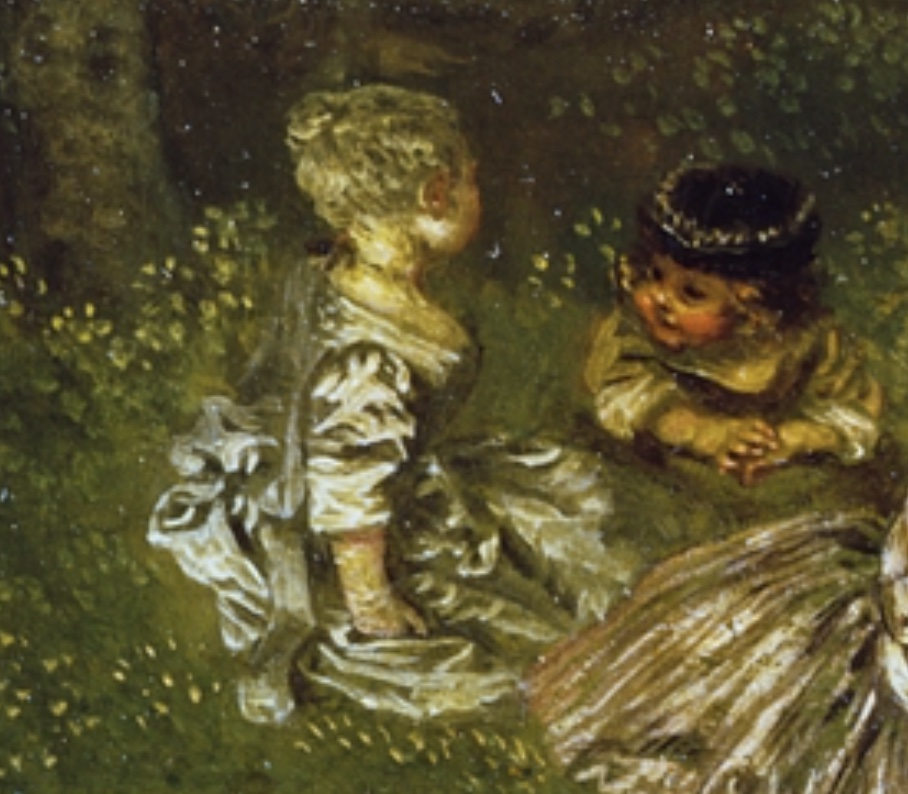
Watteau, Les Champs-Êlysées (detail), oil on canvas. London, Wallace Collection.
The seated child in the right foreground, her left arm hanging down so that her hand touches the ground, brings to mind several children in Watteau’s compositions, such as the one in Les Champs-Êlysées, though here the child is in the opposite direction.
Other aspects of this fête galante are foreign to Watteau’s oeuvre. First of all, the vertical format is one not used by Watteau for such compositions; he preferred a horizontal format for large groupings of figures in the countryside. The palace at the left is the type of architectural element found at the sides of Pater’s paintings such as his Baigneuses in Potsdam. Not least of all, the truncated tree trunk is not the type of element painted by Watteau but it was favored by Pater and other artists of his generation. In fact, it too would seem to be based directly on the tree in Pater's Baigneuses in Potsdam.
In short, while this is a clever pastiche, both its separate elements and its totality reveal it to be somewhat later than Watteau’s generation. The question is how much later?
